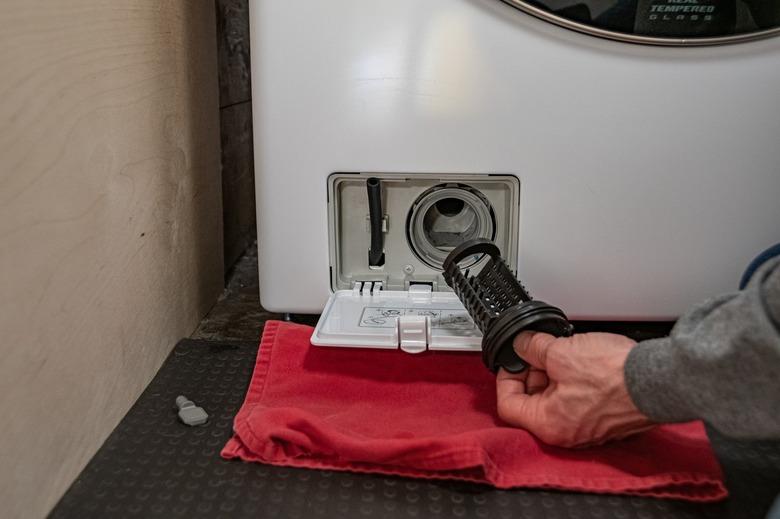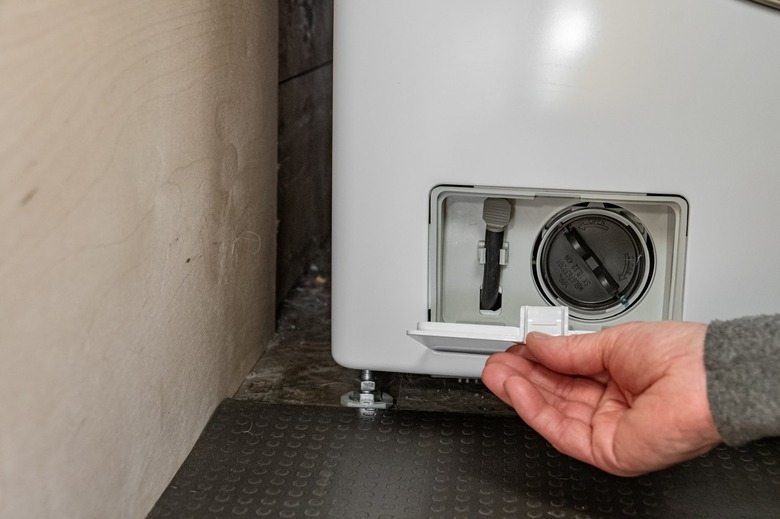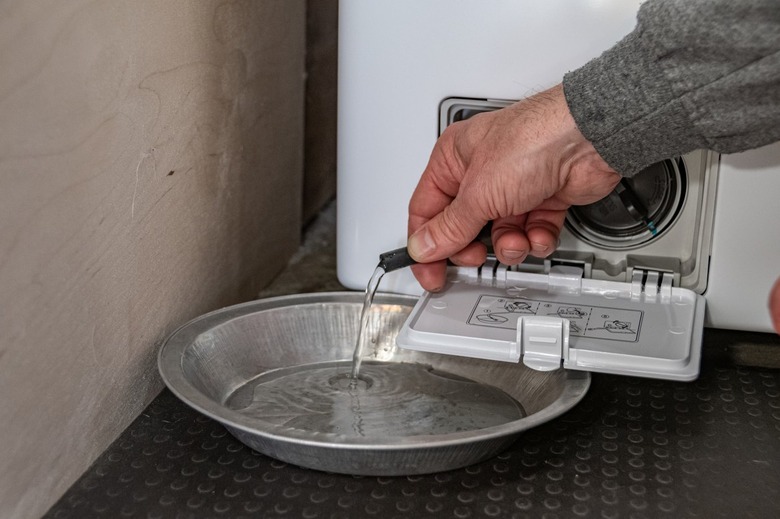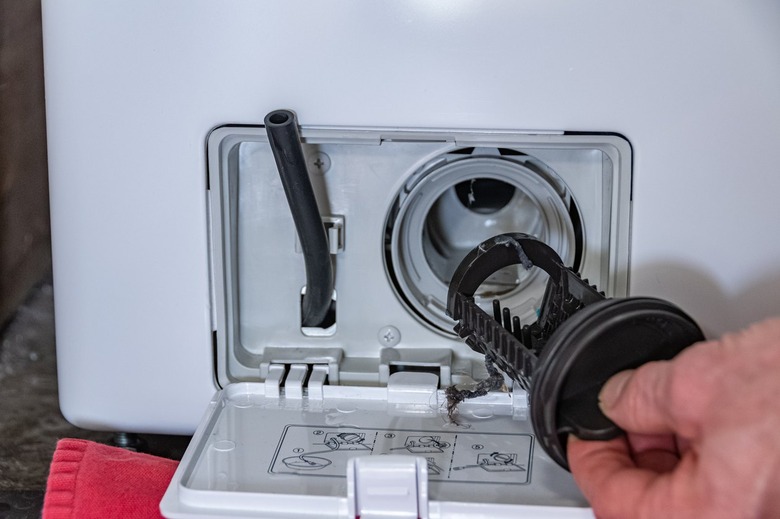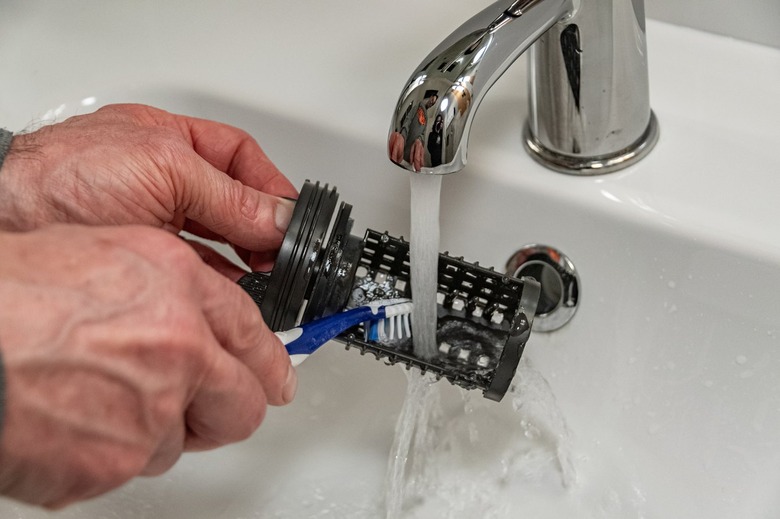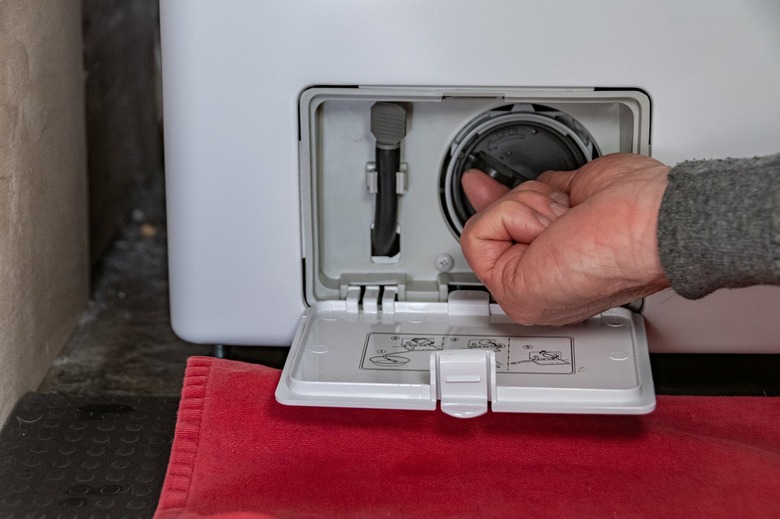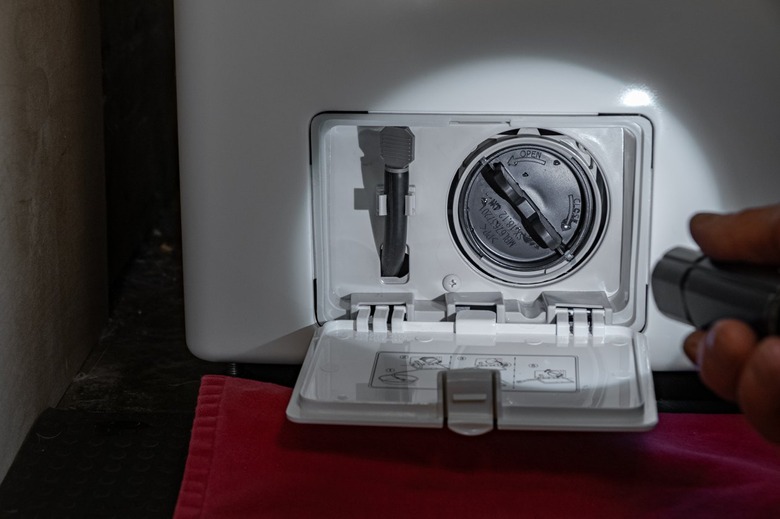How To Clean A Washing Machine Filter
We may receive a commission on purchases made from links.
Laundry machines, including your clothes washer and dryer, are endlessly useful. As if by magic, we throw in our laundry; wait a while; and then enjoy fresh, clean clothes until next time. But, unlike magic, laundry machines require regular maintenance. Just like cleaning your dryer's lint filter, your front-loading washing machine filter also needs periodic attention.
A trending TikTok video discussed the necessity of keeping your washer's drain pump filter clean and included a few steps about the process. Many homeowners were surprised to learn that their washer even had a filter, let alone that it needed regular cleaning.
Here's a look at what you need to know about your washing machine filter and how to maintain it. Try these steps before servicing or replacing a poorly working washer. It may just need a few minutes of maintenance.
What Is a Washing Machine Filter?
What Is a Washing Machine Filter?
Your washing machine's drain pump filter is essentially a lint trap similar to the one on your dryer. However, where exhaust air passes through the dryer filter, dirty water goes through the one on the washing machine before it reaches the drain pump. The water is then expelled through a drainage hose and into a household drain. The filter protects the pump from damage due to debris and lint passing through it when draining the machine after the wash cycle, which leaves you with a dirty filter over time.
Not all washing machines have an accessible filter. If you don't see where the filter is located on yours, consult the user manual or the manufacturer's website to locate it or to confirm that your model doesn't require filter maintenance. Some machines have self-cleaning filters that need to be checked only occasionally for debris buildup.
How Often Should You Clean Your Washing Machine Filter?
How Often Should You Clean Your Washing Machine Filter?
As a general rule, you should clean your washing machine drain pump filter every three months. Washers that serve large families, those that handle heavily soiled clothing, or those that are used frequently may require filter cleanings (and deep cleans in general) more often — every month or two. Seldom-used washing machines may only need cleaning a couple of times per year. The best smart washers will likely tell you precisely when they need maintenance.
Although cleaning the filter on a regular schedule is essential for effectively cleaning clothing, performing the task is also necessary to extend the pump's life. If you notice lint lingering on your clothing after washing, water draining slowly from the machine, or smelly mildew, it may be a sign of a clog or other issue, meaning it's time to clean your washer's filter regardless of the maintenance intervals.
Where Is the Filter Located on the Washing Machine?
Where Is the Filter Located on the Washing Machine?
Typically, on front-loading washing machines with an accessible filter, you'll find the drain pump filter inside a small compartment behind a removable panel on one of the lower front corners of the appliance. If there's no panel on the front of the machine, the filter may be located in a similar area but behind the kickplate below the main machine cabinet. Gently pull the plate free to locate the filter housing.
How to Clean a Washing Machine Filter
How to Clean a Washing Machine Filter
Cleaning the drain pump filter on your front-loading clothes washer is very simple — not much harder than sorting whites from darks. If it's your first time performing the task on a machine you've had for a while, expect quite a buildup of lint and perhaps a pretty stinky smell.
Things Needed
-
Flat screwdriver or small prying tool (if needed)
-
Shallow pan or small bucket
-
Old towel or rag
-
Flashlight (if needed)
-
Dish soap
-
Bucket or bowl for soaking
1. Open the Filter Compartment Cover
On most front-loading washing machines, you'll find the filter compartment in one of the lower corners on the front of the washer. Look for a rectangular metal panel. It should have a finger tab or slot that you use to open the compartment door. If there is no tab or slot, use a flat screwdriver or another small prying tool to reach into one of the edge seams and gently pry the cover loose.
2. Drain the Machine
Inside the compartment, you'll see a circular plastic cover and a small plastic or rubber hose with a plastic plug in the end. The hose is the machine's emergency drain outlet. Although you're not dealing with an emergency, the hose drains any water that's sitting in the machine.
Place a shallow pan or near the hose. Pull the hose from the clip holding it in place. Remove the plug from the end of the hose by pulling and twisting. Direct the hose into the pan and let it drain until it stops. Set the hose plug aside for now. Empty the pan in a sink or drain.
3. Remove the Filter
Place a rag or towel immediately in front of the filter compartment to catch drips when you take out the filter. Remove the filter by twisting its circular plastic cover counterclockwise until it's loose. Pull the filter straight out of its housing. Inspect the inside of the filter housing with a flashlight, if you need one, and remove any debris with your fingers.
4. Clean the Filter
Remove debris from the filter with your fingers. Rinse the filter under running tap water in a sink. Soak the filter in a tub of warm to hot water with a few drops of dish soap for 10 minutes. Use a soft-bristle brush (a toothbrush works) to scrub away any remaining lint and debris. Rinse it again under warm water.
5. Reposition the Drain Hose and Filter
There's no need to dry the filter before reinstalling it. Replace the plug on the end of the emergency drain hose. Slide the hose back to its original position and secure it in the clips. Insert the filter into its housing and twist it clockwise until you can't turn it anymore. The filter may have marks or arrows indicating where you need to turn it so it's fully seated.
5. Check for Leaks
Check your work for leaks by running a short wash cycle without detergent or clothing. Use your flashlight (if necessary) to inspect for leaks while the machine drains. If you detect a leak, remove the filter again and check for and remove any debris between the filter seal and the housing, then reinstall the filter. When no leaks are detectable, close the drain compartment cover so it snaps shut.
